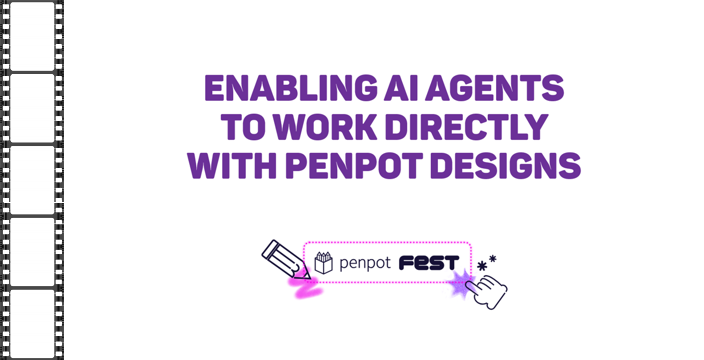This project enables LLMs to interact directly with Penpot design projects using the model context protocol (MCP), building on Penpot's plugin API to facilitate design data retrieval, modification, and creation.
The Penpot MCP server exposes tools to AI clients (LLMs), which support the retrieval of design data as well as the modification and creation of design elements. The MCP server communicates with Penpot via a dedicated Penpot MCP plugin, which connects to the MCP server via WebSocket.
This repository is a monorepo containing four main components:
-
Common Types (
common/):- Shared TypeScript definitions for request/response protocol
- Ensures type safety across server and plugin components
-
Penpot MCP Server (
mcp-server/):- Provides MCP tools to LLMs for Penpot interaction
- Runs a WebSocket server accepting connections from the Penpot MCP plugin
- Implements request/response correlation with unique task IDs
- Handles task timeouts and proper error reporting
-
Penpot MCP Plugin (
penpot-plugin/):- Connects to the MCP server via WebSocket
- Executes tasks in Penpot using the Plugin API
- Sends structured responses back to the server#
-
Helper Scripts (
python-scripts/):- Python scripts that prepare data for the MCP server (development use)
The core components are written in TypeScript, rendering interactions with the Penpot Plugin API both natural and type-safe.
To use the Penpot MCP server, you must
- run the MCP server and connect your AI client to it,
- run the web server providing the Penpot MCP plugin, and
- open the Penpot MCP plugin in Penpot and connect it to the MCP server.
Follow the steps below to enable the integration.
The project requires Node.js (tested with v22).
Following the installation of Node.js, the tools npm and npx should be
available in your terminal.
If it's your first execution, install the required dependencies:
npm installThen build all components and start the two servers:
npm run bootstrapThis bootstrap command will:
- install dependencies for all components (
npm run install:all) - build all components (
npm run build:all) - start all components (
npm run start:all)
- Open Penpot in your browser
- Navigate to a design file
- Open the Plugins menu
- Load the plugin using the development URL (
http://localhost:4400/manifest.jsonby default) - Open the plugin UI
- In the plugin UI, click "Connect to MCP server".
The connection status should change from "Not connected" to "Connected to MCP server".
(Check the browser's developer console for WebSocket connection logs. Check the MCP server terminal for WebSocket connection messages.)
⚠️ Do not close the plugin's UI while using the MCP server, as this will close the connection.
By default, the server runs on port 4401 and provides:
- Modern Streamable HTTP endpoint:
http://localhost:4401/mcp - Legacy SSE endpoint:
http://localhost:4401/sse
These endpoints can be used directly by MCP clients that support them. Simply configure the client to the MCP server by providing the respective URL.
When using a client that only supports stdio transport,
a proxy like mcp-remote is required.
The mcp-remote package can proxy stdio transport to HTTP/SSE,
allowing clients that support only stdio to connect to the MCP server indirectly.
-
Install
mcp-remoteglobally if you haven't already:npm install -g mcp-remote -
Use
mcp-remoteto provide the launch command for your MCP client:npx -y mcp-remote http://localhost:4401/sse --allow-http
For Windows and macOS, there is the official Claude Desktop app, which you can use as an MCP client. For Linux, there is an unofficial community version.
Since Claude Desktop natively supports only stdio transport, you will need to use a proxy like mcp-remote.
Install it as described above.
To add the server to Claude Desktop's configuration, locate the configuration file (or find it via Menu / File / Settings / Developer):
- Windows:
%APPDATA%/Claude/claude_desktop_config.json - macOS:
~/Library/Application Support/Claude/claude_desktop_config.json - Linux:
~/.config/Claude/claude_desktop_config.json
Add a penpot entry under mcpServers with the following content:
{
"mcpServers": {
"penpot": {
"command": "npx",
"args": ["-y", "mcp-remote", "http://localhost:4401/sse", "--allow-http"]
}
}
}After updating the configuration file, restart Claude Desktop completely for the changes to take effect.
⚠️ Be sure to fully quit the app for the changes to take effect; closing the window is not sufficient.
To fully terminate the app, choose Menu / File / Quit.
After the restart, you should see the MCP server listed when clicking on the "Search and tools" icon at the bottom of the prompt input area.
To add the Penpot MCP server to a Claude Code project, issue the command
claude mcp add penpot -t http http://localhost:4401/mcp
